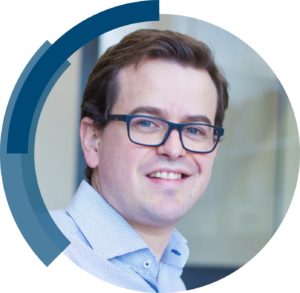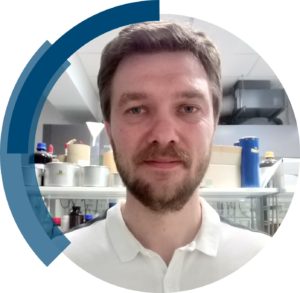We are excited to share the success of Philip Norcott’s first-time independent article in ChemComm; ‘Current electrochemical approaches to selective deuteration‘ included in the full milestones collection.
Read our interview with Philip
What are the main areas of research in your lab and what motivated you to take this direction?
I am interested in finding simple ways to synthesise new molecules that are designed for particular purposes or show unusual chemical properties. One of these synthetic methods is electrochemistry – using electrical potential to drive oxidation or reduction reactions instead of chemical reagents. An outcome of synthesis where I’m focused is in field of NMR hyperpolarisation, which is a technique to increase signal levels and detect trace intermediates or other compounds. In NMR studies, deuteration can be very important, but making deceptively simple deuterated molecules comes with its own synthetic challenges.
Can you set this article in a wider context?
Electrosynthesis is becoming far more accessible as a synthetic technique, even for self-described ‘non-experts.’ Part of the attraction of this method is the potential to produce valuable molecules in a more efficient, safer, milder, and controllable way. In the context of deuteration, instead of using deuterium gas under forcing conditions or very expensive analogues of deuterated synthetic reagents, electrochemistry opens up access to a wide range of reactive intermediates which can readily acquire deuterium from simple, cheap sources. Often, and ideally, this can simply be D2O. This article identifies the current strategies and substrates able to undergo selective deuteration in this way, and suggests areas where the burgeoning interest in electrochemistry currently in the synthetic community can play a part to develop further labelling processes.
What do you hope your lab can achieve in the coming year?
I hope to be able to demonstrate reactions which display interesting chemoselectivity enabled by electrochemistry, and a new process for hyperpolarising organic compounds.
Describe your journey to becoming an independent researcher.
I did my PhD in organic chemistry at the University of Sydney, Australia, then went on to do two postdocs at the University of York, United Kingdom, then the Australian National University in Canberra, Australia. Working on very different projects in each provided me with an opportunity to try out some new areas of chemistry, and these topics ended up laying the groundwork for my current research interests. I was awarded an Australian Research Council Discovery Early Career Researcher Award (ARC DECRA) in 2021 to begin my independent research career.
What is the best piece of advice you have ever been give?
When reading articles or attending conference presentations and seminars, try to identify at least one part you don’t understand: a reaction, chemical reagent, word or concept that’s new to you, and take it as a chance to broaden your knowledge.
Why did you choose to publish in ChemComm?
ChemComm is renowned for quality and timely research in all of chemistry, and so appeals to a wide audience in terms of readers’ fields, backgrounds and interests; by submitting to ChemComm I hoped to engage as broad an audience as possible with my article topic.
 |
Philip L. Norcott completed his PhD at the University of Sydney, Australia, in 2016 with a focus on organic synthesis using catalysis in aqueous emulsions. He then spent two years as a postdoctoral researcher at the University of York, United Kingdom, at the Centre for Hyperpolarisation in Magnetic Resonance, with an emphasis on the synthesis of isotopically labelled materials for NMR applications. Following this he returned to Australia as a postdoctoral researcher at the Australian National University in Canberra, investigating the application of electrochemistry and electrostatic effects on organic chemical reactivity. He was awarded an Australian Research Council Discovery Early Career Researcher Award (ARC DECRA) in 2021 to launch a research program which is focused on synthetic methods to improve NMR hyperpolarisation through activation of para-hydrogen, and the synthesis of isotopically labelled molecules enabled by electrochemistry. |
Explore more ChemComm Milestones news and updates on our Twitter: @ChemCommun













